At first glance, The Hammerli Arms Force B1 looks like a Ruger 10/22 clone with a big charging handle. But there are a lot of unique things about it. First of all, it’s not a semi-auto. The Force B1 is packed with novel features that small-game and varmint hunters will appreciate, but what really sets this new rimfire apart is its straight-pull action.
Straight-pulls have been creeping their way into American rifle shooting over the past few years. Having tested a number of them, I have to say that I’m on the fence about this type of action sort of like I’m on the fence about ranch dressing on chicken wings. People seem to want to make it a thing, but I still prefer bolt actions (and blue cheese). Still, I have seen some good straight-pulls, so I was excited to test the Force B1. And I wasn't disappointed. After spending a few weeks shooting the rifle, here is my full review.
Hammerli Arms Force B1 Specs
Caliber: 22 LR, 22 WMR (coming soon)
Color: Several from black polymer to walnut
Barrel: 16.1 inch threaded switch barrel design
Stock: Adjustable wood or polymer
Trigger: Ruger-10/22-style trigger pack
Magazines: (2) 10-Round 10/22-style rotary with adapters for multiple chamberings
Weight: 5¾ pounds
Overall Length: 35½ to 37½ inches
Price: $649 to $999, depending on stock finish and material
Hammerli Arms Force B1 Overview
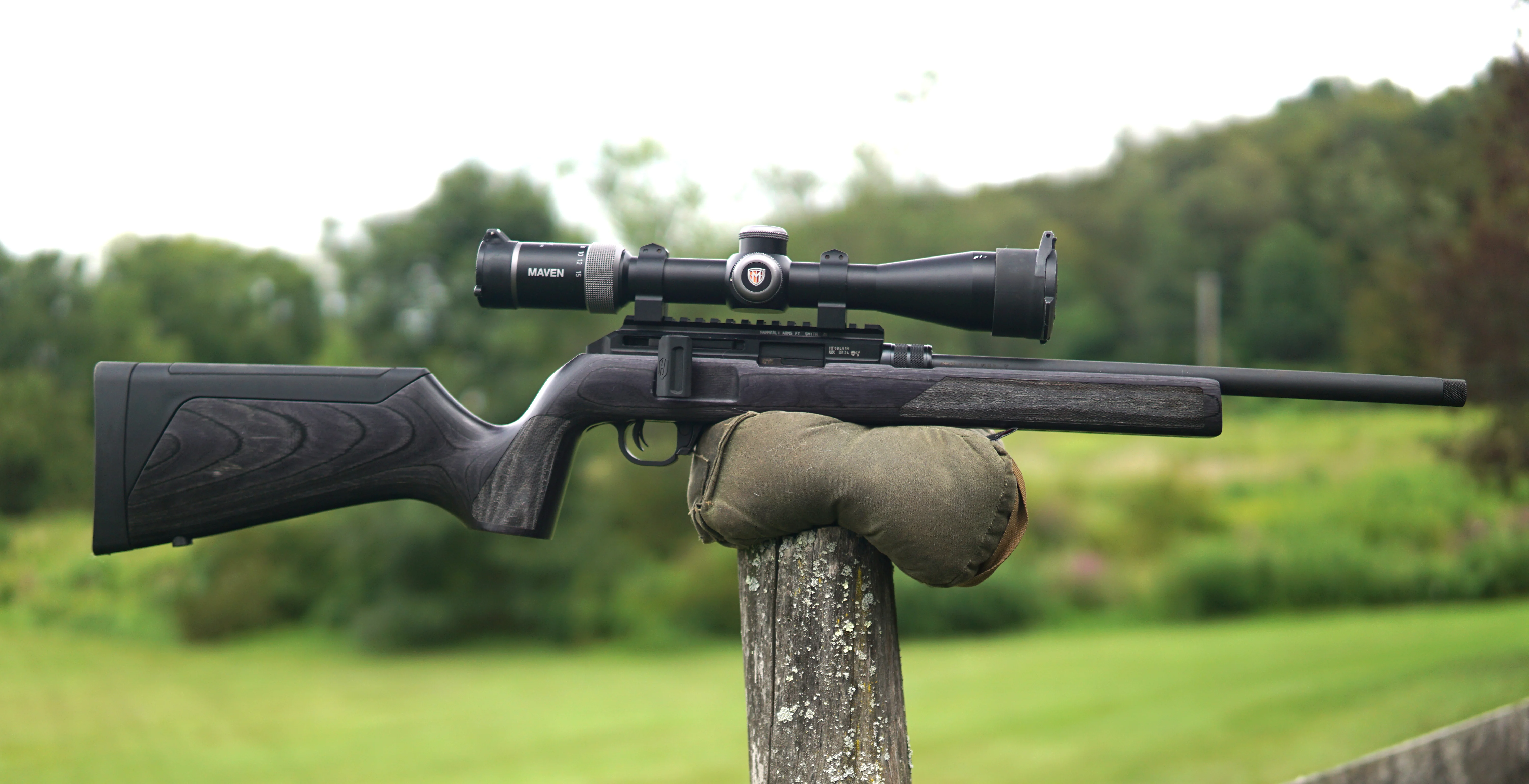
Hammerli makes several stocks for the Force B1, from a classic walnut to polymer. The version they sent me had a wood stock in a Sports Gray finish. It sits in the middle of the pack as far as price goes, with the polymer being the most affordable and walnut versions hovering just shy of a grand.
All Force B1 rifles have an adjustable length of pull via a button that’s hidden in the buttpad. Adjustments are extremely easy to make without tools. At 6’3” with lanky arms, I felt the rifle fit me well after extending the stock. It’s nearly vertical pistol grip feels good in the hand, too. The stock can also be adjusted for two different comb heights without tools by removing and re-inserting the rubber comb. The forend is squared off, and rides nicely on a shooting bag or rest. It also has a generous row of M-LOK for attaching a bipod, light, or whatever trendy gun stuff you want to attach to your gun.
The Force B1 uses a biathlon-style straight-pull bolt with a wide handle that feels like a paddle shifter on a sports car. The bolt is a bit stiff, but the charging handle gives you plenty of purchase for multiple fingers to pull back and chamber a new round. When you do chamber a round into battery, the bolt snaps forward with a positive click.
The rifle’s receiver also has an interesting switch-barrel design. It works a lot like a quick-connect fitting you’d find on an air-tool chuck. Pulling the fitting retracts a row of ball bearings that releases the barrel for a quick swap. This lets you trade your 22LR barrel for a 22 WMR barrel (coming soon from Hammerli) or a barrel of a different length.
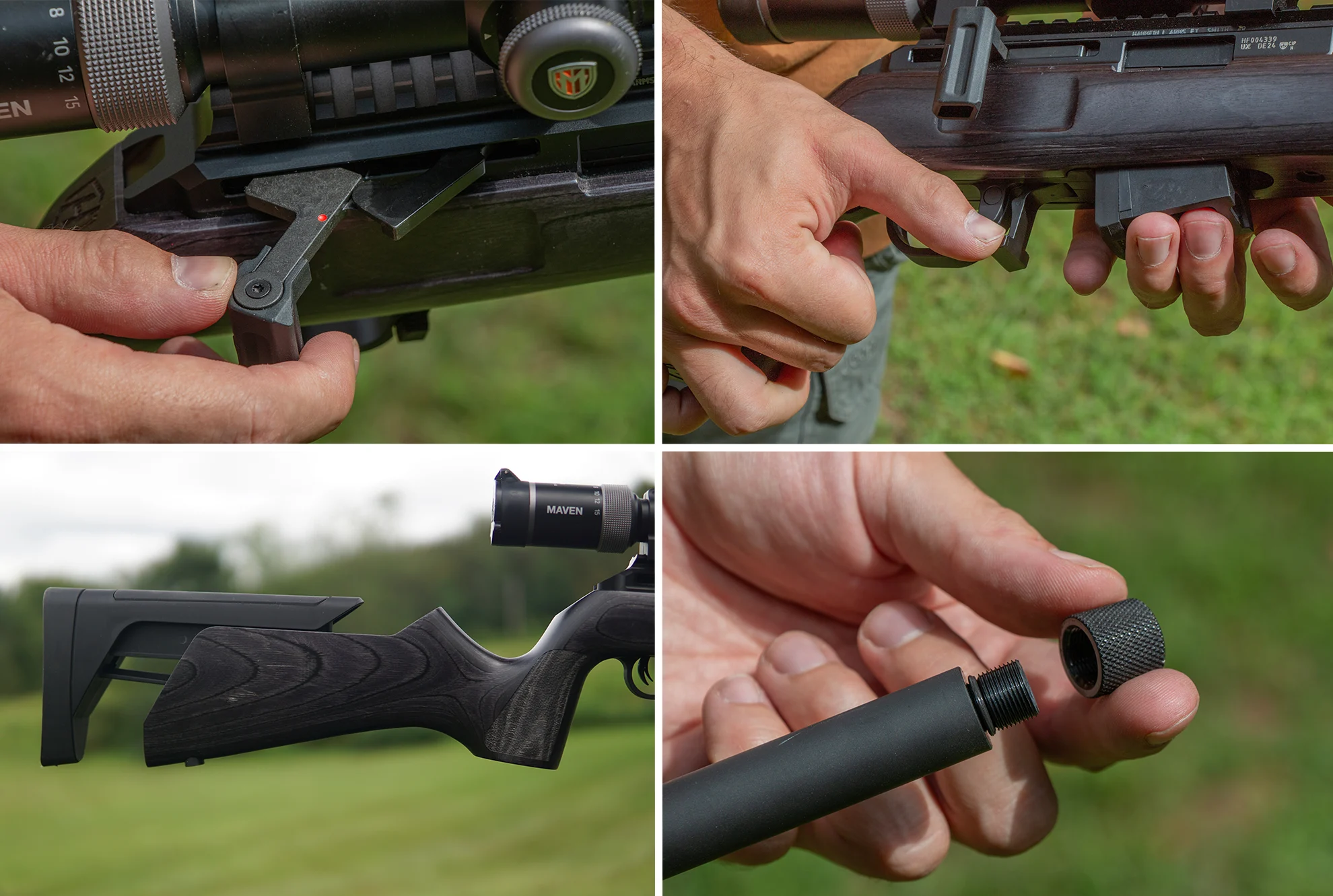
If you’re concerned the Ruger 10/22-style magazines wont work for both cartridges, Hammerli has thought of that already. They ship two 22LR magazines with adapters to take up the extra space of the 22 WMR. You can buy more adapters from Hammerli for aftermarket 10/22 magazines, which is nice. When it’s time to change to 22 WMR, simply use a 10/22-style magnum magazine without the adapter. Hammerli has also added an extended magazine release for quick changes.
The Force B1's compatibility with the 10/22 doesn’t stop with magazines. It also accepts Ruger 10/22 trigger packs, so you can choose from a number of quality aftermarket triggers. Finally, the Force B1 has an integral, machined scope rail, which is nice, a threaded barrel for suppressors, also nice, and QD cups for a sling—very nice.
Related: The Best Rifles of 2024, Tested and Reviewed
How I Tested the Force B1
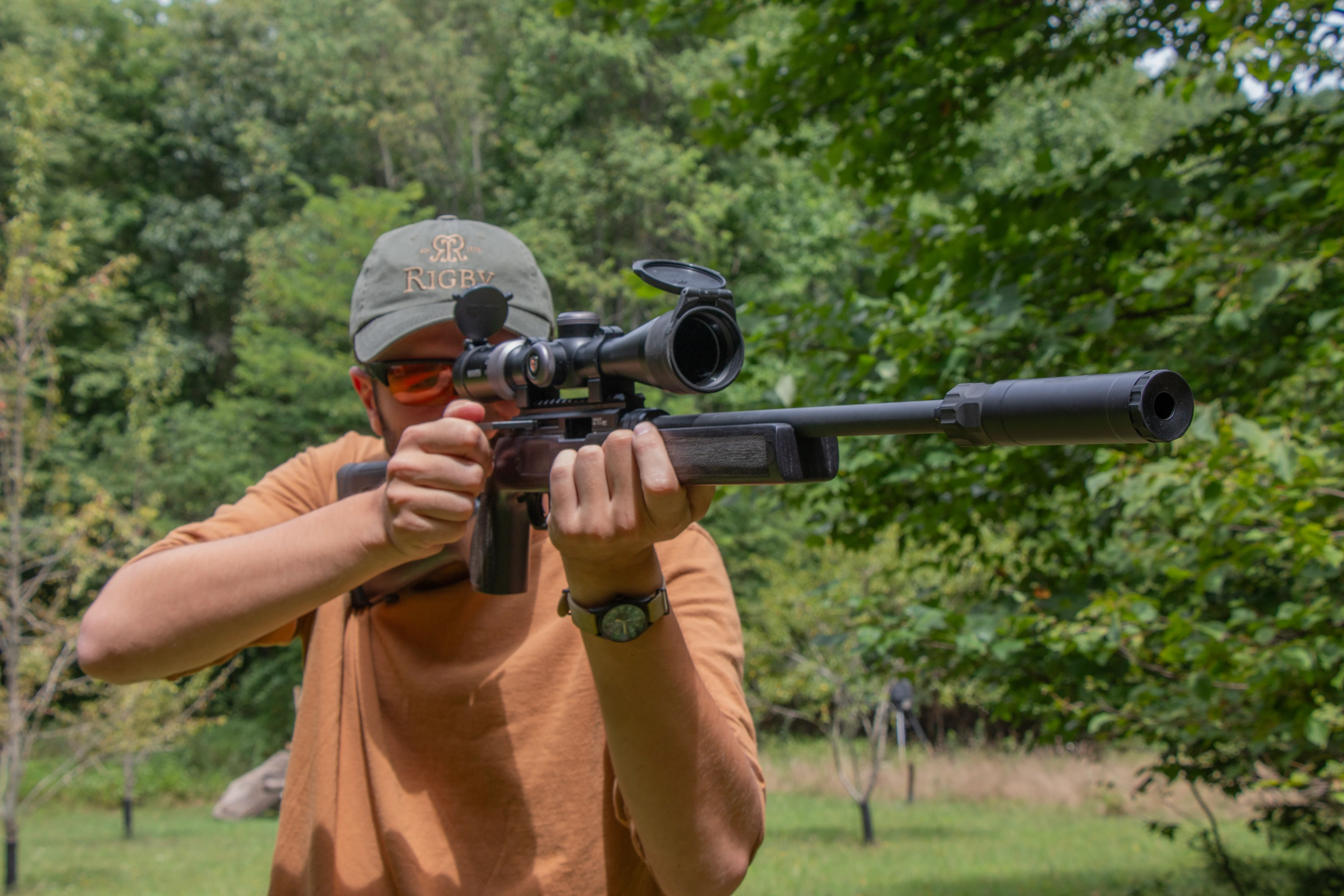
First, I evaluated the rifle for build quality, ease of use, and how easy the rifle was to set up and shoot out of the box. I then put a Maven RS.1 rifle scope with an adjustable parralax to help dial in for close range shots hunters usually have while squirrel or rabbit hunting, and to rule out how parralax could affect group size.
Next, I took it to the bench and fired five 5-shot groups with five different loads at 50 yards. After that, I shot the Force B1 from different field positions and took it on a woods walk to simulate small-game hunting. I ran the gun fast, to see how easy it was to get a follow-up shot and make sure it didn’t jam.
Related: Beretta BRX1 Straight-Pull Rifle Review
First Impressions of the Force B1
Out of the box, the Force B1 has the feel of a quality rifle. This wasn’t a huge surprise, as the company has been making top-end competition pistols for years. The wood was nicely finished and everything worked as advertised. I also found the gun to be intuitive to set up and easy to manipulate.
At first, the straight-pull bolt took a bit of getting used to. And while it is a bit hard to work, it is consistent and doesn’t feel mushy or toy-like. You get a positive lock-up when a round is in the chamber, and the action ejects spent casings with authority. From the bench, the rifle was easy to shoot. Its squared-off forend sat nicely on a shooting bag, and the extended magazine release made it easy to reload the gun efficiently.
Walking around, the Force B1 felt lightweight and easy to pack around for a day in the woods. I really appreciated the vertical grip that felt great when shooting from the seated positions I usually shoot at squirrels from. It was also easy to shoot and reload quickly off-hand, which I had a lot of fun doing on a 5-inch steel plate at about 60 yards.
Hammerli Arms Force B1: Shooting Test Results
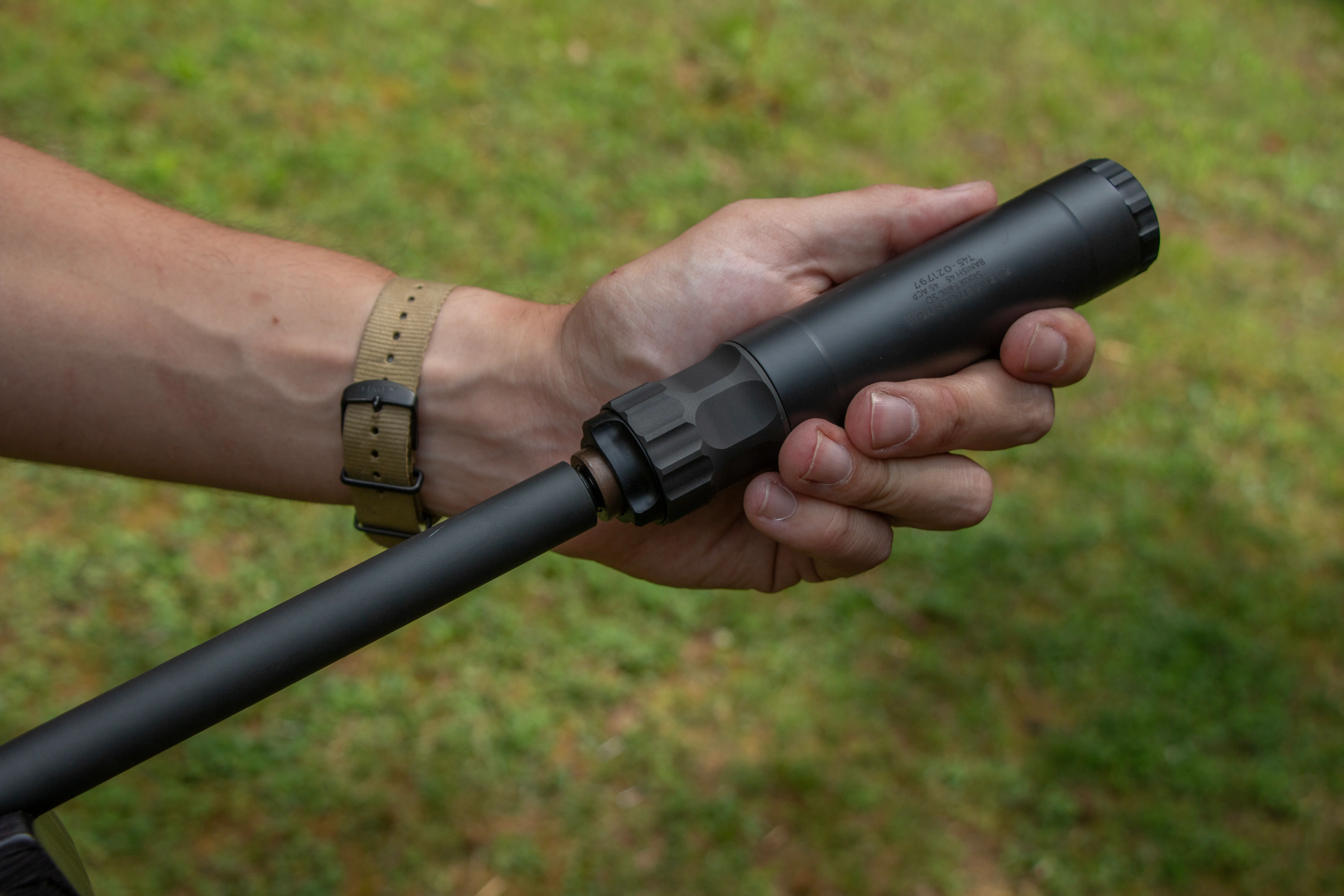
The rifle liked some ammo brands and really didn’t like others. Of the lot I tested, the Force B1 shot CCI MiniMags the best, with a group of .656 inches at 50 yards. CCI Standard Velocity came in second at .824 inches. It also liked cheaper ammo like Federal American Eagle, which produced a .972 inch group. The worst was a Winchester Subsonic Hollow-Point load with a 2.16 inch group. This isn’t a knock on the ammo or the rifle. The two just didn’t get along.
No matter the load, the gun fed and ejected cartridges without issue. Though the bolt is stiff, you do get used to it, and I’d imagine after hunting with it for a season, I’d really like it. The trigger also took some getting used to. It wasn’t inconsistent or cheap-feeling, it was just stiff. I don’t feel like it affected my shooting, but if I were to buy one of these rifles, I’d swap in an upgraded 10/22 trigger pack—which is one of the coolest things about this rifle.
Final Thoughts on the Hammerli Arms Force B1
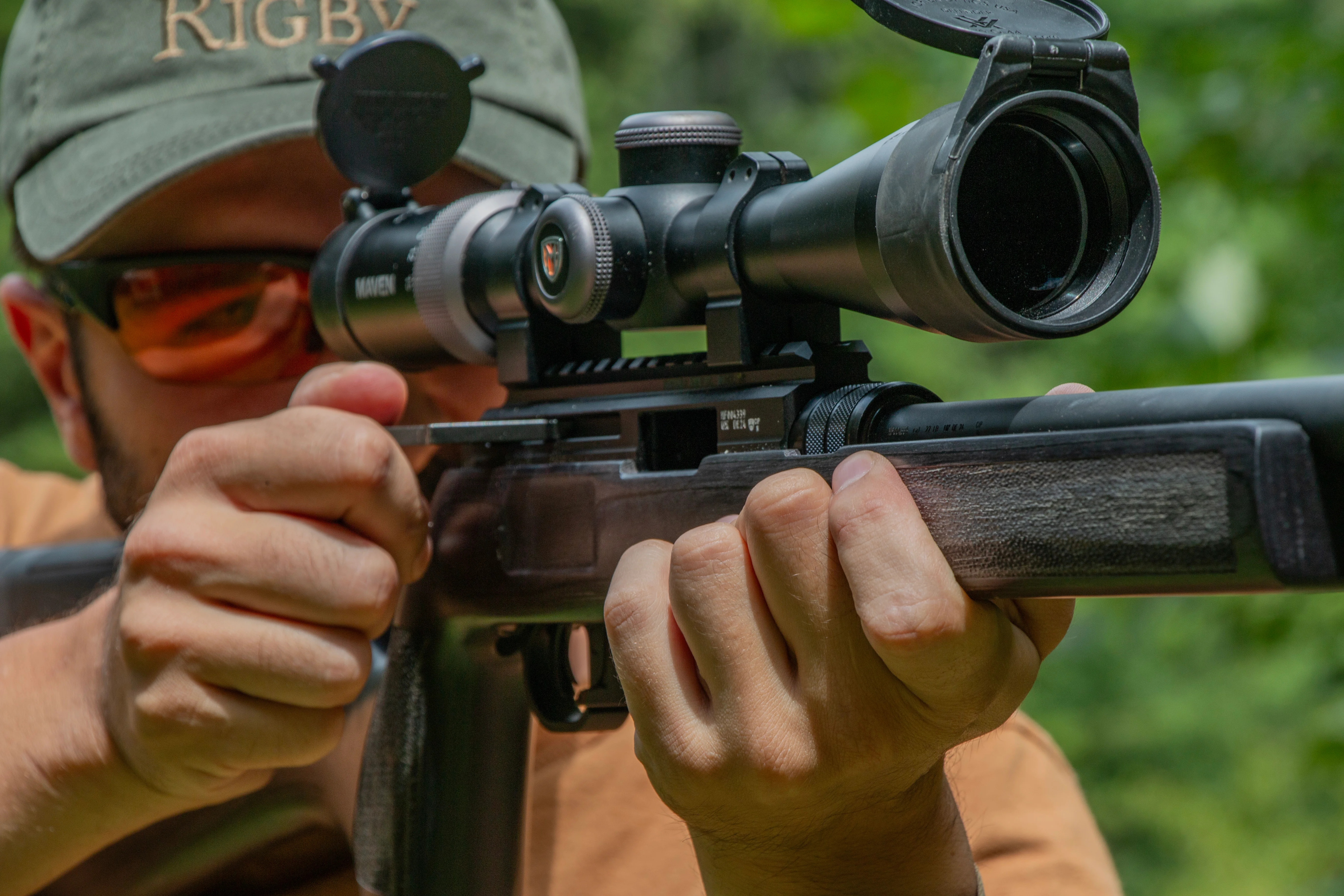
It’s nice to see a new firearm design that really gives a shooter some options. What’s so great about the Force B1 is that Hammerli was thinking about how people would actually interact with this rifle when they made it. The switch barrel design is simple and effective, giving you two rifles in one once you purchase a separate barrel. The ability to change to 22 WMR makes this a great camp or truck gun, capable of small-game hunting or a little varmint shooting on the farm should you find a fox interested in your chicken coop.
The adjustable stock is also nice. The rifle would work well for a younger hunter, but it’s still a serious tool for mom or dad when they want to go hunting. Adjustments can be made in the field, making it a great rifle to pass around and plink with. All of this adaptablity makes the Force B1 a real value. At around $600 to $700, you’re really getting several rifles in one.
One thing I really like about the Force B1 is that it’s not a semi-auto. Semi-auto 22s are great, but they can be a hassle to buy in some states. They also have more parts to break and more opportunities to jam. With the Force B1, you don’t have any of that, but the rifle still feels like a semi-auto. Is it the last 22 you’ll ever buy? Probably not. But it fills a lot of practical roles you’d ask of a rimfire.



